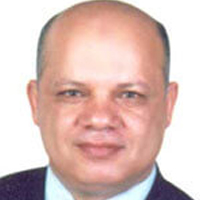Genetic identification of three exhumed human remains at a hospital in Ghana: a forensic case report
Published on: 7th January, 2022
OCLC Number/Unique Identifier: 9395224000
DNA identification is very important in cases of high decomposition of dead bodies, in which the bodies cannot be identified by physical means.To compare the results of DNA typing, it is necessary to have related subjects with which to perform comparative analyses. Such tests are normally performed by comparing DNA profiles from people known to be immediate family members of the presumptive victim, such as parents or children because they share half of their genetic material with the unidentified.We report on how DNA analysis was used to solve a case of mixed-up bodies at a local mortuary in Ghana, West Africa. Two families and three buried human remains were in contention in this case. The first body (E9) was buried three months before exhumation. The second body (E11) was buried two and a half months before exhumation whiles the third body (E10) was buried a month before exhumation. Exhibit E5 was taken from an alleged child of the deceased, E11. Toenails of the exhumed bodies were sampled by a pathologist and used for DNA extractions using the QIAamp DNA Investigator Kit. Profiles from relatives were generated for comparison purposes. All samples gave a quality amount of genomic DNA after quantification. DNA was amplified with a GlobalFiler PCR amplification kit. Profiles from relatives were generated for comparison purposes.The human remains (exhibit E11) cannot be excluded as the biological father of the child (exhibit E5) because they share common alleles at all 23 genetic loci. The applicable combined paternity index was 17218125604.492 assuming a prior probability of 0.5. The probability of paternity is 99.99999999%. Based on this relationship testing, one of the bodies was successfully identified and handed over to the family for re-burial.
















